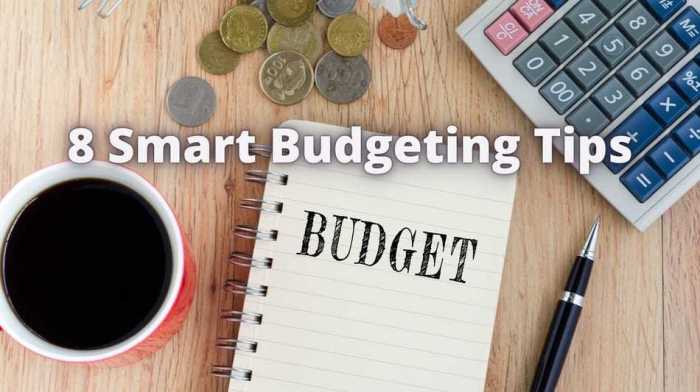Embark on a journey to financial freedom with our guide on How to Save $500 in 30 Days: Smart Budgeting Tips. From cutting expenses to increasing income sources, this article offers practical advice to help you reach your savings goals.
Learn how to take control of your finances and make significant changes in just a month by implementing smart budgeting strategies.
Ways to Cut Expenses

Saving money can be achieved by cutting down on unnecessary expenses. By identifying areas where you can reduce spending, you can reach your savings goal faster.
Eliminate Non-Essential Expenses
- Avoid eating out frequently and opt for home-cooked meals instead.
- Cancel unused subscriptions like streaming services or magazines.
- Avoid impulse shopping and stick to a shopping list.
- Limit spending on coffee runs and make your own at home.
- Avoid unnecessary online shopping and unsubscribe from promotional emails.
Reduce Utility Bills
- Turn off lights and unplug electronics when not in use.
- Adjust your thermostat to save on heating and cooling costs.
- Use energy-efficient appliances and light bulbs to lower electricity bills.
- Take shorter showers and fix any leaks to reduce water consumption.
Meal Planning for Grocery Savings
- Plan your meals for the week and create a shopping list to avoid impulse buys.
- Buy in bulk for items you use frequently to save money in the long run.
- Cook in batches and freeze leftovers for quick and easy meals later on.
- Use coupons and look for sales to maximize savings on groceries.
Limit Entertainment Spending
- Opt for free or low-cost entertainment options like hiking, picnics, or movie nights at home.
- Share streaming accounts with friends or family to split the cost.
- Look for discounts or deals on tickets for events or attractions.
- Limit dining out and choose affordable dining options or cook at home instead.
Creating a Budget Plan

Creating a budget plan is essential to effectively manage your finances and reach your savings goals. By setting up a monthly budget template and tracking your expenses, you can gain better control over your money and make smarter financial decisions.
Design a Monthly Budget Template
To create a monthly budget template, start by listing all your sources of income and fixed expenses such as rent, utilities, and debt payments. Then, allocate a portion of your income for variable expenses like groceries, entertainment, and personal care. Make sure to also include a category for savings to prioritize building your emergency fund or reaching specific financial goals.
Importance of Tracking Expenses
Tracking expenses is crucial to understand where your money is going and identify areas where you can cut back. By monitoring your spending habits, you can make adjustments to stay within budget and avoid unnecessary purchases. This awareness helps you make informed decisions and stay on track with your financial goals.
Examples of Budgeting Apps
There are several budgeting apps available to help you monitor your finances efficiently. Popular options include Mint, YNAB (You Need a Budget), and Personal Capital. These apps offer features like expense tracking, budget categorization, bill reminders, and financial goal setting to simplify the budgeting process and keep you organized.
Common Budgeting Mistakes to Avoid
– Neglecting to account for irregular expenses like car maintenance or medical bills.
– Setting unrealistic budget limits that are difficult to maintain.
– Failing to adjust your budget when circumstances change, such as a pay raise or unexpected expenses.
– Not prioritizing savings or emergency funds in your budget.
– Relying too heavily on credit cards and accumulating debt instead of sticking to your budget.
Increasing Income Sources

When looking to save money, one effective strategy is to increase your income. By exploring various ways to bring in extra cash, you can reach your savings goals faster.
Side Hustles for Extra Money
If you have some spare time outside of your regular job, consider taking on a side hustle to earn additional income. This could involve freelancing, tutoring, pet sitting, or driving for a rideshare service.
Passive Income Opportunities
- Investing in dividend-paying stocks or bonds can provide a steady stream of passive income.
- Renting out a room in your home through platforms like Airbnb can generate extra money without much effort.
- Creating and selling digital products, such as e-books or online courses, can also be a source of passive income.
Selling Unused Items
Take inventory of items you no longer need or use, and consider selling them online or at a garage sale. This can not only declutter your space but also put some extra cash in your pocket.
Negotiating a Raise or Promotion
Before asking for a raise or promotion, prepare a list of your accomplishments and contributions to the company. Highlight how you have added value and deserve the increase in pay or title.
Schedule a meeting with your supervisor to discuss your request professionally and confidently. Be prepared to negotiate and showcase your worth to the organization.
Closing Summary

In conclusion, mastering the art of budgeting and saving can lead to a more secure financial future. By following the tips Artikeld in this guide, you can take steps towards achieving your savings targets and building a strong financial foundation.